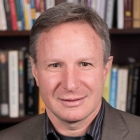You are here
Targeted Transcranial Direct Current Stimulation Combined with Bimanual Training for Children with Cerebral Palsy
Goals
Unilateral spastic cerebral palsy (USCP) is characterized by movement deficits, particularly upper extremity (UE) impairments on one side of the body. Although strides have been made to improve UE rehabilitation approaches, even the best available therapies fail to fully ameliorate UE impairments, are costly, and require large amounts of time. Thus, there is an urgent need to optimize the effectiveness and cost of UE therapies. Our long-term goal is to develop evidence-based strategies to improve movement in children with USCP. Early damage to the developing brain can result in a re-wiring of the direct corticospinal tract (CST) projections innervating UE function. In many children with USCP, there are no CST connections from the damaged hemisphere, and instead ipsilateral (same-sided) CST pathways control movement of the affected UE. Previously, this type of reorganization was believed to be maladaptive and unresponsive to treatment. However, during the first funding period of this R01, we determined that UE therapy efficacy is independent of CST laterality. Importantly, we found that the hemisphere containing CST connectivity to the affected hand showed neuroplastic changes in response to intensive therapy. Nonetheless, this heterogeneity in the brain connectivity means it is unlikely that a one-size-fits-all rehabilitation approach will be suitable. Therefore, our next goal is to leverage these findings using an individualized approach to obtain the same or greater changes using a fraction of the dosage by enhancing the neuroplastic changes with transcranial direct current stimulation (tDCS). Our preliminary results show that tDCS enhances the efficacy of UE training only if it is targeted to an individual’s CST laterality determined with single-pulse transcranial magnetic stimulation (TMS). The overall objective for this renewal is to vertically extend what has been learned under our prior R01 by determining how to optimally target tDCS to enhance the efficacy of UE training in children with USCP. Our central hypothesis is that bimanual training (BT) combined with a tDCS montage targeting the hemisphere with CST connectivity to the impaired UE muscles will improve UE function more than BT plus sham stimulation. We will test this by conducting a randomized clinical trial (RCT) to determine the efficacy of targeted tDCS/BT for improving UE function and interactions between tDCS/BT and motor cortex physiology in children with USCP. Our working hypotheses are that children who receive targeted anodal tDCS will show the most robust changes in hand function and motor cortex physiology. Determination of the synergistic effects of tDCS and BT may substantially reduce the required rehabilitation time and cost necessary to improve UE function. The proposed work is innovative because it may increase accessibility of treatment, particularly for centers that serve families of lower socio-economic status, due to the reduced cost of therapy.


